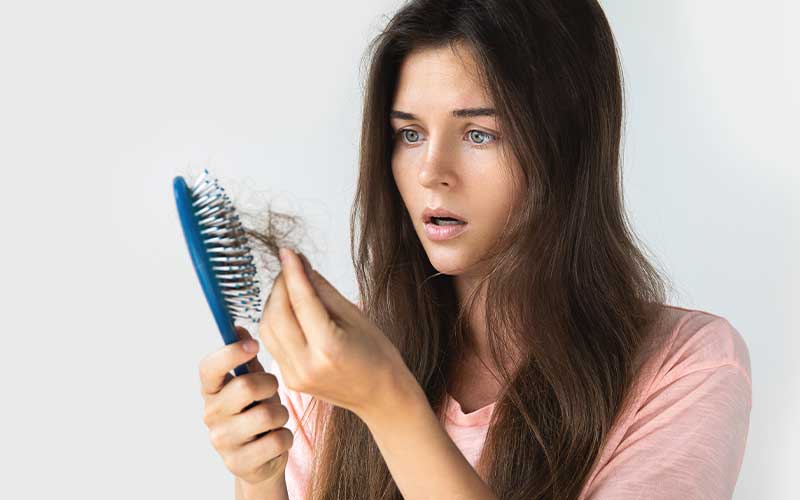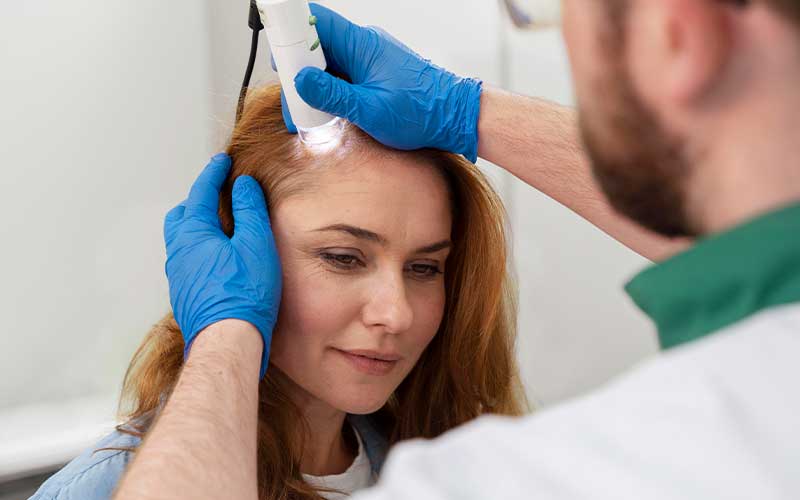Free Consultation Form
Female hair transplantation is a surgical procedure for women’s hair loss or to correct or improve sparse hair areas. Hair loss or hair dilution is also a common problem in women. Hair loss can be an important concern for women for aesthetic or psychological reasons.
Female Hair Loss
Female hair loss can have a significant impact on many women in their daily lives. Hair is an important symbol of beauty for women. Women who experience hair loss are physically and psychologically negatively affected by the dilution or thinning of their hair. The effects of female hair loss on daily life are generally as follows:
- Hair loss is a common aesthetic concern among women. Women may experience low self-confidence due to the thinning or shedding of their hair. This can cause them to experience shyness, embaressment or self-distrust in social interactions.

- Hair loss has a significant impact on women’s appearance and aesthetic concerns. Shedding or thinning of their hair can make women feel older or unattractive.
- Women who experience hair loss can try to camouflage hair loss by changing their hairstyle or makeup preferences. This can prolong the daily preparation process and be time consuming.
- Hair plays an important role in social interactions. Women who experience hair loss can pay more attention to their hair in their interactions with other people or avoid social activities due to hair loss.
- Hair loss can have psychological effects such as stress, anxiety and depression in women. Due to the dilution or shedding of their hair, their self-esteem may decrease and they may experience emotional negative effects.
The effects of female hair loss on daily life can vary from person to person. Hair loss may not be a major problem for some women, but it can be an important source of aesthetic and psychological anxiety for others. Women who experience hair loss can look for different methods and treatments to deal with this situation.
Methods Used in Female Hair Transplantation

Female hair transplantation is usually done using the FUE method. In this method, from the donor region; The hair roots, usually taken from behind the nape, are separated individually and placed in the area to be planted. The procedure is done under local anesthesia and is applied to ensure the comfort of patients.
Female hair transplantation does not apply to large areas such as men. It is often used to reconstruct the hairline, correct hair dilution or correct the balding parts of the eyebrows or other body areas.
Hair roots planted after female hair transplantation first fall off and then new hair comes out naturally. The full recovery process can take several months and the results become apparent over time.
Female hair transplantation is a preferred method for achieving aesthetic results that are suitable for women’s natural hair structure. After the procedure, it is important to follow the recommendations of your doctor and perform proper care and follow the recovery process.
Choosing an experienced surgeon or specialist clinic for female hair transplantation increases the chances of success and prevents unwanted complications. Everyone’s healing process may differ, so it is important to be patient and follow your doctor’s instructions.
Things to Consider After Hair Transplantation
- It is important to rest after hair transplantation and limit physical activities. At least the first few days you should avoid intense physical activities.
- The planted and donor areas should be protected against impacts and friction. You should avoid touching, rubbing or touching the head area to cause itching.
- You can apply cold as recommended by your doctor to reduce post-transplant swelling and bruises.
- You should regularly use the medications your doctor has prescribed. Medicines are given to reduce the risk of infection and support recovery.
- It is important to keep your head high while sleeping in the early days to reduce swelling and regulate blood flow.
- You should avoid using hair styling products or makeup products to the area where hair is cultivated for the first few days. You should leave the area to heal naturally.
- Itching and crusting sensation may occur in the cultivated area. To prevent itching, you should follow the methods your doctor recommends and avoid touching the crusted areas.
- To support the healing process, you should take care of healthy nutrition and adequate water consumption.
Female hair transplantation should be done by an experienced surgeon in the field. Before the procedure, you should talk to your doctor about the risks and side effects in detail and provide appropriate care by following your doctor’s recommendations after the procedure. This way, you can reduce potential risks and achieve successful results. You should evaluate with your doctor whether you are a suitable candidate for the procedure and make an informed decision.